“Rare Cancer Seen in 41 Homosexuals,” ran the headline of the New York Times story in July 1981. One of the first news reports about HIV/AIDS to appear in a major mainstream publication, the article referred to what would initially be called GRID, or gay-related immune deficiency. And from the start, HIV/AIDS impacted the world not only as a devastating and heavily-stigmatised health crisis, but also sparked a massive political movement and a cultural and social transformation.
At times when the panic and fear were at their peak, popular culture — from literature to TV reality shows — has helped influence perception of HIV/AIDS and those living with it. To honour the effects of AIDS activism on the social, cultural, medical and political spheres, here are 22 important moments in pop culture that changed how the world viewed HIV/AIDS.
1) An Early Frost
An Early Frost is the first made-for-TV movie focused on a character living with HIV/AIDS and advanced the public conversation around the epidemic. Winner of three Emmys and a Golden Globe, the 1985 film follows a closeted Chicago lawyer played by Aidan Quinn who comes out to his family after he is diagnosed. Director John Erman, along with his co-writers, were gay men who had lost loved ones due to the disease. To help make the film, they consulted medical specialists, met AIDS patients and attended therapy groups for those with AIDS.
2) ACT UP protest posters
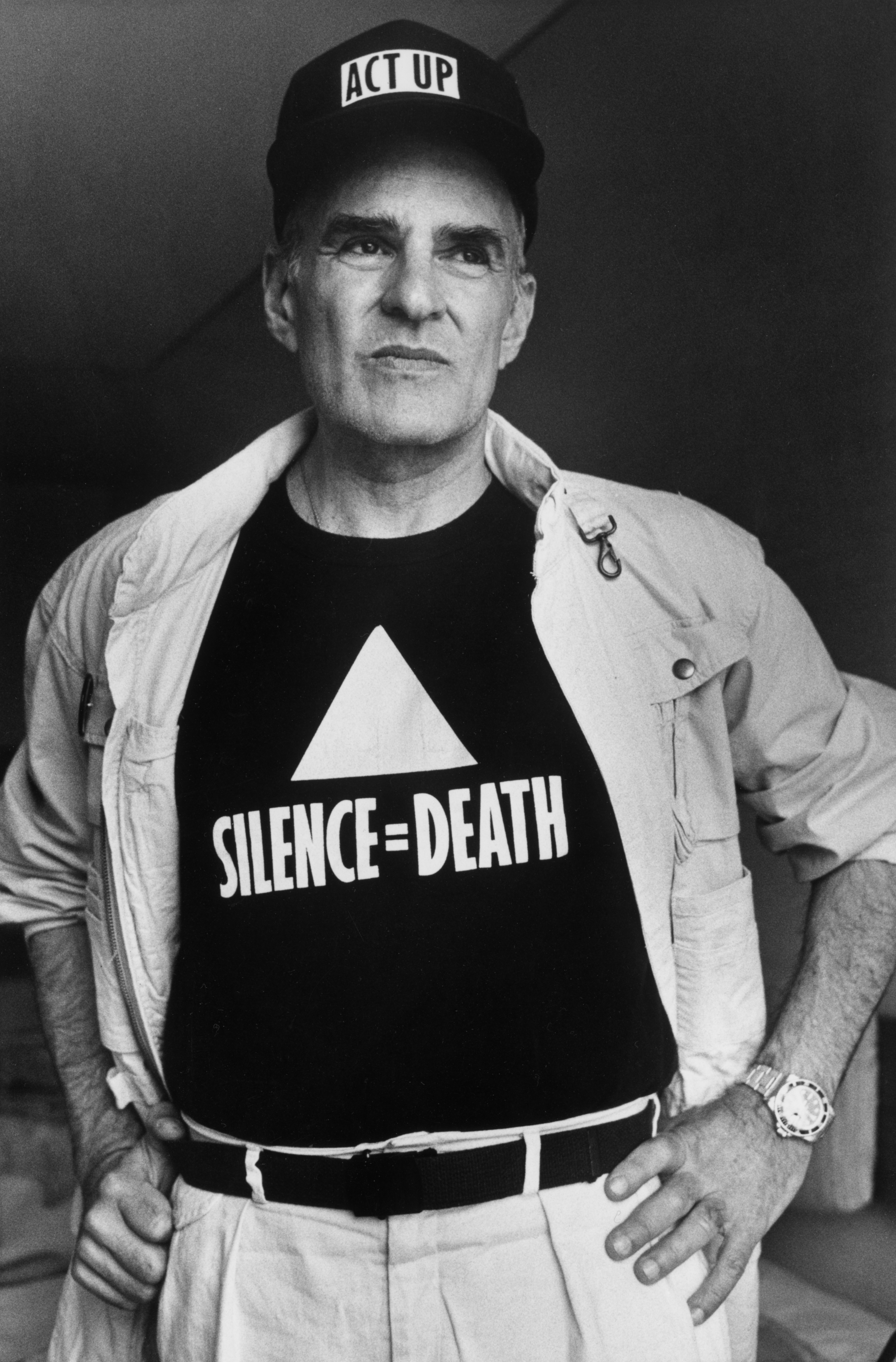
Founded in New York in 1987, ACT UP (AIDS Coalition to Unleash Power) was one of the first major, in-your-face AIDS activism groups and is credited with changing how the US Federal Drug Administration controlled access to AIDS medication.
One iconic ACT UP poster included a photograph of Ronald Reagan next to an orange and black bull’s-eye target. The bold graphic text beneath Reagan’s smiling face said simply, “HE KILLS ME.” These posters and t-shirts were instantly attention-grabbing, setting the tone of ACT UP’s activist work as they confronted social apathy towards HIV/AIDS. One iconic work associated with ACT UP is Keith Haring’s famous poster featuring three illustrated figures with their eyes, ears and mouths covered respectively, each bearing a pink X across their bodies. Above them, the text reads “IGNORANCE = FEAR,” and beneath them, “SILENCE = DEATH,” next to a pink triangle with the call to “FIGHT AIDS” and “ACT UP.” These were among the works featured at the exhibition “ACT UP New York: Activism, Art, and the AIDS Crisis, 1987 – 1993,” which presented from Sept 9 to Oct 23, 2010, at the New York art space White Columns, after it was first presented at Harvard University in 2009.
3) Rock Hudson announces he has AIDS
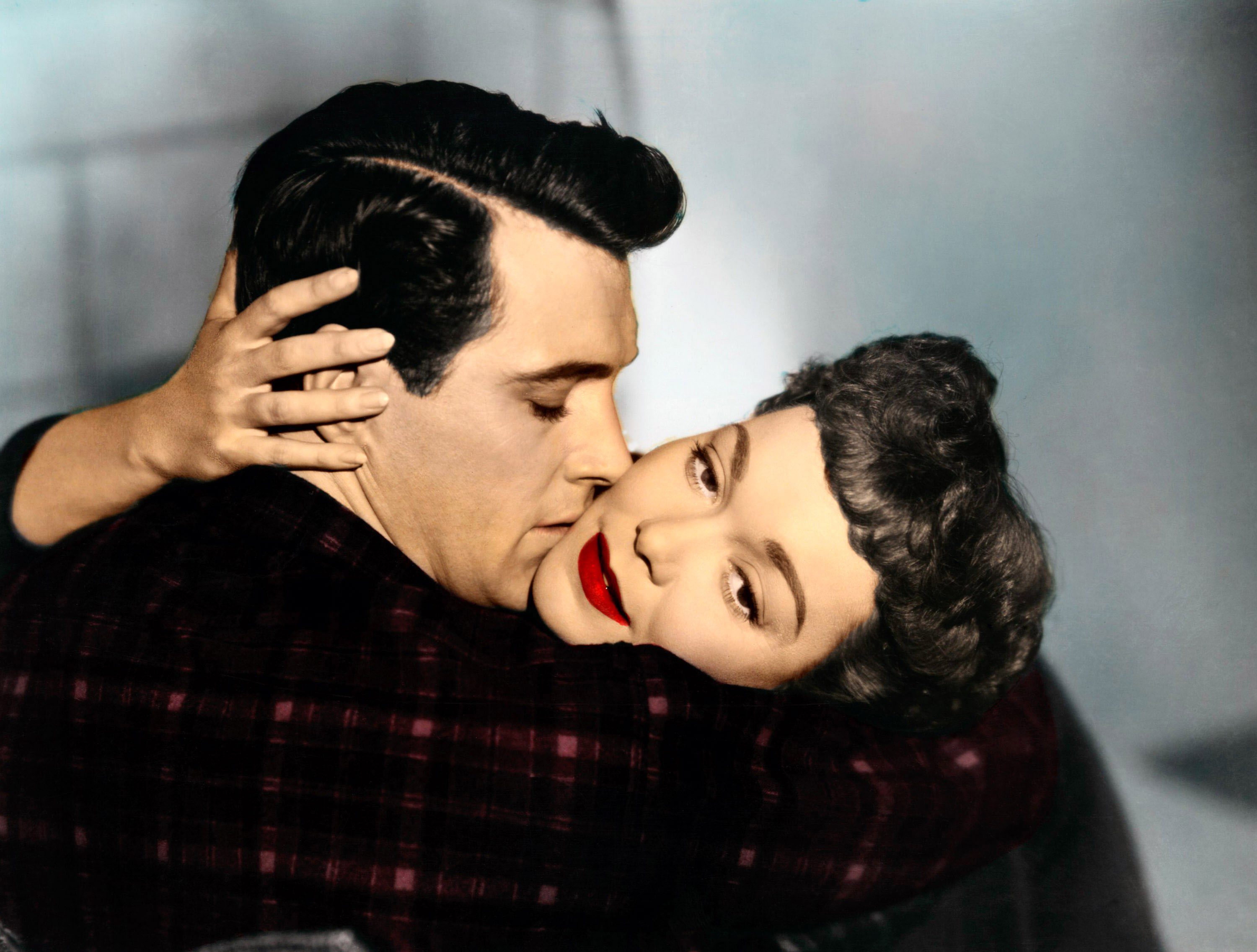
From the 1955 film “All that Heaven Allows.” From left: Rock Hudson and Jane Wyman, 1955. Credit: Courtesy Everett Collection/The Canadian Press.
Hollywood golden age heartthrob and closeted leading man Rock Hudson became one of the first celebrities to announce he had AIDS in 1985, shocking fans who had considered him the epitome of ideal American masculinity. His announcement catapulted discussions about HIV/AIDS into the forefront of the media — especially since he was friends with then-US president Ronald Reagan, who had refused to acknowledge the seriousness of the disease Hudson died of AIDS-related causes three months later. He is immortalized with a star on the Hollywood Walk of Fame.
4) Cyndi Lauper’s single “Boy Blue”
Written for a friend who was dying of AIDS, the single “Boy Blue” from Cyndi Lauper’s 1986 True Colors album is a heart-wrencher. The singer donated the proceeds to HIV/AIDS research and in 2007 created the True Colors tour with the aim of “engag[ing] audiences to take part in the advancement of gay, lesbian, bisexual and transgender (GLBT) equality.”
5) ER’s Jeanie Boulet

Gloria Reuben of "ER" arrives at the 51st Annual Primetime Emmy Awards at Los Angeles in 1999. Credit: AP Photo/Mark J. Terrill/The Canadian Press
When the character Jeanie Boulet of the medical drama ER discovered she had HIV in 1996, it shocked viewers — she was a straight Black woman who had a condition once called the “gay cancer.” The character’s storyline offered rare representation for many living with HIV at a time when there were huge misconceptions surrounding HIV/AIDS. Boulet’s actress, Toronto-born Gloria Reuben, now advocates for Black women living with HIV/AIDS.
6) People in Trouble
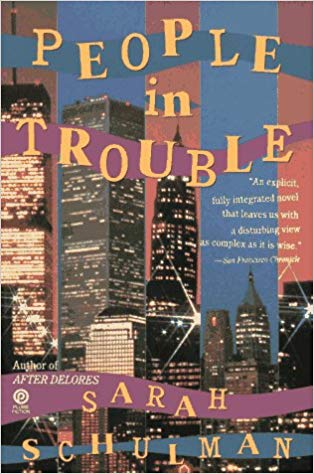
Credit: Plume
Sarah Schulman’s 1990 People in Trouble hit the shelves as a “social-realist novel” describing queer life and AIDS activism in New York in the 1980s. The story follows a love triangle involving an artist’s sexual awakening against the backdrop of AIDS chaos as she and her girlfriend become involved in an AIDS activist group. This heart-rending tale has a tragedy of its own, however: Schulman asserts that the wildly-popular musical Rent, which debuted in 1996, heavily borrowed from her story.
Schulman is a novelist, activist, playwright, screenwriter and AIDS historian who also coordinated the ACT UP Oral History Project, a collection of interviews with surviving members of ACT UP New York.
7) Gran Fury’s “Kissing Doesn’t Kill” campaign
The AIDS activist artist collective Gran Fury created the 1989 campaign with the headline, “Kissing Doesn’t Kill: Greed and Indifference Do,” placed above images of three, racially diverse couples — two of them same-gender pairs — kissing. It was meant to look like the then-enormously popular United Colors of Benetton advertisement and was plastered on buses and in other public spaces. The work was characteristic of Gran Fury’s strategy to raise awareness and confront indifference around HIV/AIDS via guerilla marketing, which often shocked and incensed viewers.
8) The Normal Heart
Based on the 1985 play of the same name by Larry Kramer, the 2014 television movie The Normal Heart illuminates the resistance faced by LGBTQ activists and allies during the crisis in furthering research about HIV/AIDS. The film received a total of 28 wins and 54 nominations, including winning the best movie award at the 2014 Critics’ Choice Television Awards, the outstanding television movie award at the 2014 Primetime Emmy Awards, as well as the 2015 GLAAD Media Award for outstanding TV movie or mini-series.
9) Paul Monette’s Borrowed Time: An AIDS Memoir
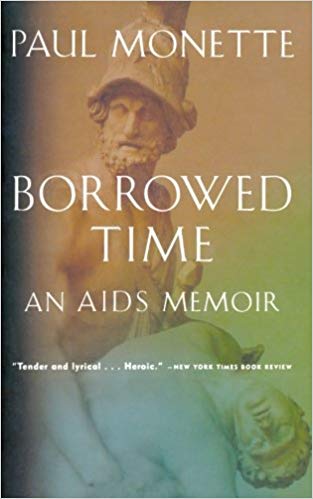
National Book Award–winning author and activist Paul Monette’s Borrowed Time: An AIDS Memoir was first published in 1988. In it, Monette details his great love with the lawyer Roger Horwitz, who died of AIDS-related complications in 1986. Monette himself passed away due to AIDS complications in 1995 at 49 years old, but not before establishing the Monette-Horwitz Trust, which “honors individuals and organizations for their significant contributions toward eradicating homophobia.” The book was one of the first accounts dealing with AIDS and was a finalist for the National Book Critics Circle Award.
10) General Idea
The Canadian art collective General Idea is perhaps best known for its homage to Robert Indiana’s iconic “LOVE” piece with the block-lettered “AIDS” motif in 1989This bold piece was characteristic of the collective’s work, which aimed to directly address issues and the stigma around AIDS. General Idea comprised of three artists, Ronald Gabe, Slobodan Saia-Levy and Michael Tims, who met in Toronto in 1969 and later adopted the pseudonyms Felix Partz, Jorge Zontal, and AA Bronson respectively. Their shows went on to tour numerous countries including Barcelona, Germany, San Francisco, and Toronto. Partz and Zontal were diagnosed with AIDS and passed away in 1994.
11) Rent
We would be remiss if we failed to mention the Pulitzer Prize- and Tony Award–winning musical Rent, which dealt with themes of love, community and HIV/AIDS stigma. Created by playwrights Jonathan Larson and Billy Aronson as a New York-centric, American version of Puccini’s opera La Bohème, Rent debuted at the New York Theatre Workshop in 1996 and has been credited with having “changed the face of HIV awareness.” Today, the musical is a Broadway staple considered one of the best of all time, with a 2005 film adaptation of the same name.
12) Essex Hemphill’s “American Wedding”
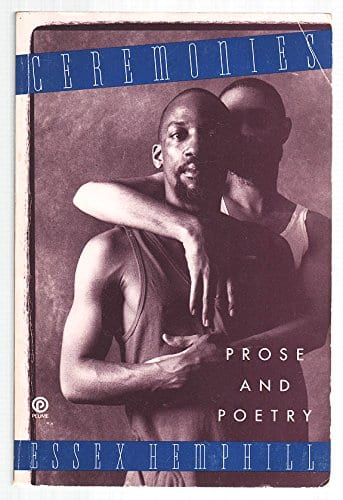
“They don’t know
we are becoming powerful.
Every time we kiss
we confirm the new world coming.”
— Excerpt of “American Wedding,” Essex Hemphill
Award-winning Chicago-born poet, essayist, spoken-word performer and activist Essex Hemphill published the poem “American Wedding” in his 1992 collection Ceremonies. An influential advocate for issues affecting the Black LGBTQ community as well as an AIDS activist, Hemphill was part of an artistic movement dubbed the Second Harlem Renaissance. Hepassed away due to AIDS complications three years after Ceremonies was published, but his poetic and activist legacy lives on: 2017 National Book Award finalist Danez Smith names Hemphill as an inspiration.
13) “Until That Last Breath: Women With AIDS” exhibition
The 1991 exhibition “Until That Last Breath: Women With AIDS” connected viewers with the experiences and lives of women living with AIDS in San Francisco. The exhibition was groundbreaking as it addressed the construction of HIV/AIDS as something that only affected men, embodied in Gran Fury’s art piece “Women don’t get AIDS, they just die from it.” Initially presented at New York’sNew Museum, photographer Ann Meredith worked with the Women’s Support Group of the San Francisco AIDS Foundation, the Woman’s AIDS Network and the San Francisco Commission on the Status of Women to bring the exhibition to numerous American cities.
14) Angels in America
Tony Kushner’s ambitious, sprawling two-part play Angels in America first premiered in a small San Francisco theatre in 1991. Buoyed by both its positive public reception and the urgency of the issues it tackled, the play moved on to Broadway and won a Pulitzer two years later. An HBO mini-film adaptation aired in 2003 to critical praise, winning multiple Golden Globes, Emmys and GLAAD awards among others, breaking the Emmys record for highest number of wins by a miniseries.
15) Sapphire’s Push
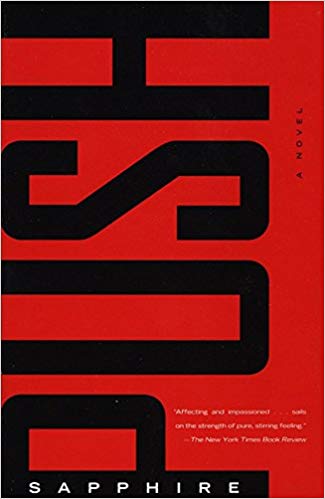
Author Sapphire’s Push was published in 1996 and tells the unflinching story of 16-year-old Claireece “Precious” Jones, an HIV-positive teen who is made pregnant by her father and subjected to constant abuse by her mother. The story is informed by the author’s experience as a teacher and was adapted into the Oscar award–winning film Precious in 2009.
16) How to Survive a Plague
A window into the HIV/AIDS crisis in the 1980s, How to Survive a Plague is an excruciating must-watch. Based off David France’s book of the same name, the Oscar-nominated documentary offers a look into the activists and organizations confronting social indifference and stigma while fighting for drugs to treat the disease.
17) How to Get Away with Murder’s Oliver Hampton
Oliver Hampton (played by Conrad Ricamora) on the wildly popular TV show How to Get Away with Murder, is one half of the prominent gay couple lovingly given the portmanteau “Coliver.” He also offers rare contemporary representation as a HIV positive character.
The media watchdog GLAAD served as an advisor and worked with the show’s writers to ensure that the episode in which Hampton told his mother he was HIV-positive was accurate to the experiences of those living with HIV. About the episode, Ricamora emphasized, “it is allowing people to see characters and a person living with HIV that is thriving and it’s not about them having a crisis.”
18) John Greyson’s Zero Patience
Canadian director John Greyson’s 1993 film Zero Patience was described as “a cheekily agitating ‘AIDS musical’” that draws on the story of Gaëtan Dugas, the French-Canadian flight attendant who had been dubbed “Patient Zero” of the HIV/AIDS epidemic. The “Patient Zero” theory has since been discredited. The film won the best Canadian feature film award at the 1993 Toronto International Film Festival.
19) Elton John’s “The Last Song”
Co-written with Bernie Taupin, “The Last Song,” which features on Elton John’s 1992 album The One, takes on the voice of a man dying from AIDS who reunites with his estranged father. John founded the Elton John AIDS Foundation in the United States in 1992 and in the United Kingdom the following year with the aim of supporting services and education related to HIV.
20) Pedro Zamora on The Real World: San Francisco
Pedro Zamora, a 22-year-old Cuban American, captured hearts instantly when he appeared on MTV’s The Real World: San Francisco in 1994. Zamora’s romance with fellow AIDS educator Sean Sasser was one of the first real-life gay relationships on television.
His work in educating others about HIV/AIDS had far-reaching effects after his death in 1994, the morning after the final The Real World episode — the National AIDS Memorial Grove created the Pedro Zamora Young Leaders Scholarship to support academic work of young people doing HIV/AIDS research and activism.
21) Philadelphia
The first major Hollywood film to address how the HIV/AIDS epidemic affected gay men, Philadelphia shook audiences when it hit theatres in 1993. The Oscar-winning movie follows a gay lawyer who is fired because he has AIDS. While the film has amassed criticism in the decades since its release — ACT UP founder Larry Kramer expressed his frustration that the movie “doesn’t have anything to do with the AIDS I know, or with the gay world I know” — it has also been credited with humanizing those with HIV/AIDS in a time where such media representation was scarce.
22) Rabih Alameddine’s The Angel of History
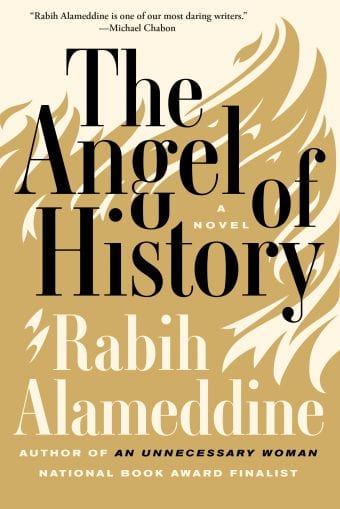
Credit: Atlantic Monthly Press
The Angel of History is a critically-praised 2016 novel by writer and painter Rabih Alameddine, who has been nominated for the National Book Award and PEN/Open Book award among others. Set in San Francisco, the novel is about a gay, Arab-American poet named Jacob, who struggles with memories of loved ones lost to AIDS and the fact that he’s living in a country enacting war upon the countries he was raised in.
This story is part of our coverage on World AIDS Day.
Legacy: November 29, 2018 10:26 amThis story has been updated for accuracy to note that the “Patient Zero” theory has since been discredited.
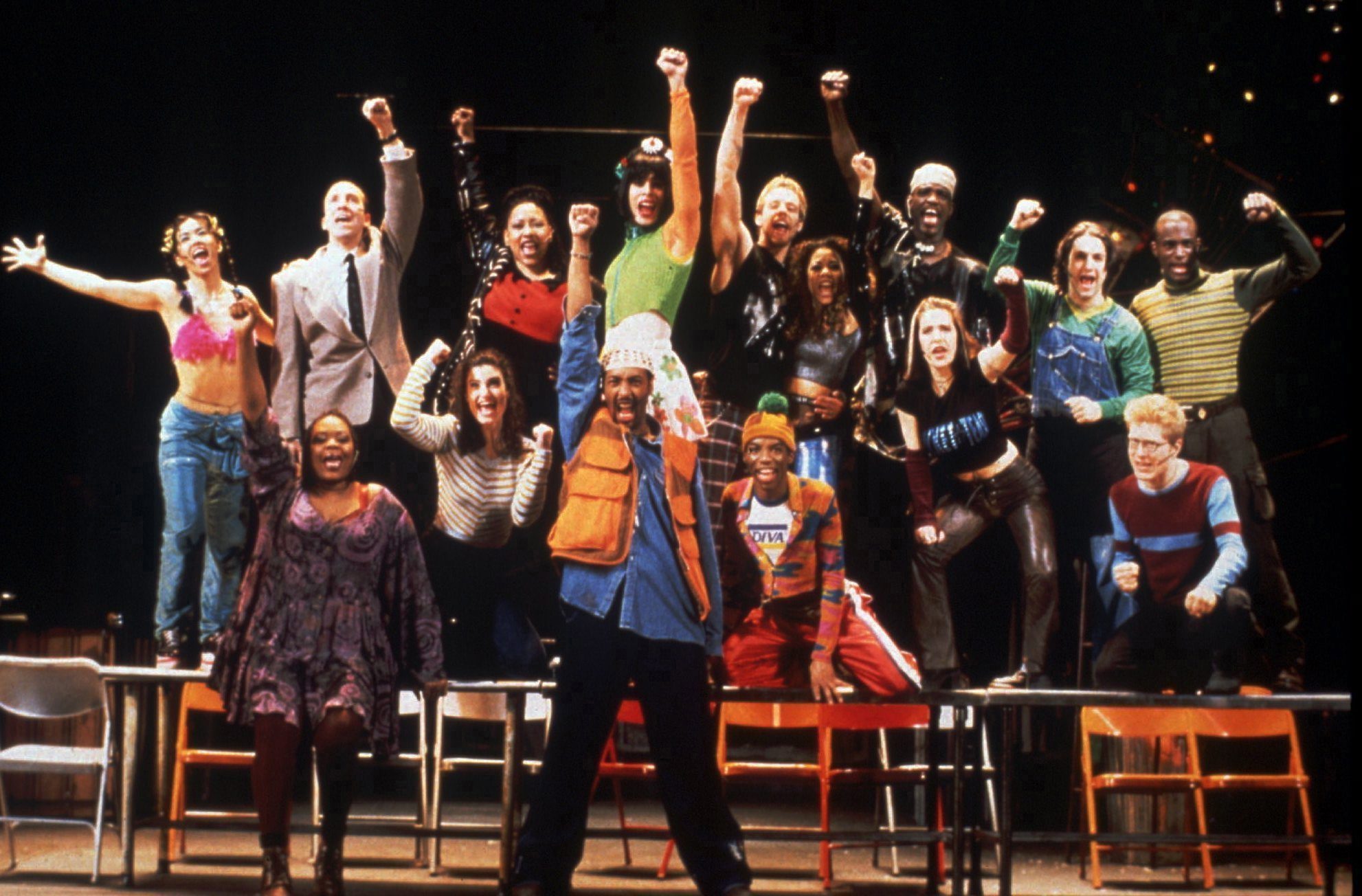

 Why you can trust Xtra
Why you can trust Xtra


